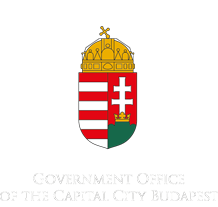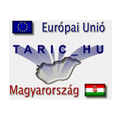
Market Surveillance
About market surveillance
Market surveillance came into the national legislation throughout the implementation of the New Approach directives within the harmonization of the Hungarian legislation. With the adoption of the regulations of the European Union (EU), the requirements for placing products on the market in Hungary have been changed even before Hungary's accession to the EU.
The traditional legislation subjected the placing on the market of certain industrial products to the authority licensing or to the compulsory preliminary certification. The new system is based on the liability of the manufacturer. According to New Approach directives (which are transposed to Hungarian law) the products are subjected to the conformity assessment procedures prior to the placing on the market. To carry out the conformity assessment procedure is the task of the manufacturer. In case of conformity of the product with the relevant basic requirements, the manufacturer puts the CE marking on the product. Products bearing the CE marking may be released into free circulation – not only in the territory of the European Union, but in the European Economic Area (EEA, i.e. the 27 member states of the EU and Iceland, Norway, Liechtenstein), furthermore in Switzerland and Turkey, too. The pre-licensing system has been replaced by the post market surveillance.
About the system of EU product rules and their implementation, including market surveillance, issued by the European Commission, one can read in the so-called "Blue Guide". It is available here, which can be downloaded in Hungarian, among other languages.
1. The principles of market surveillance
The market surveillance procedure is a tool for enforcing the requirements of the New Approach directives in the European Union.
Its aim is to ensure that the requirements of concerning laws are applied at Community level, contributing by this to the free movement of complying products, to the same level of protection of the citizens in the single market, regardless of the origin of the product. To ensure this protection, the member states operate market surveillance authorities which have the necessary powers and knowledge to carry out their tasks. They shall carry out their duties independently, impartially and without bias.
2. Market surveillance activity
The national market surveillance authorities monitor the conformity of products − with the relevant new approach directives and/or the implementing legislation − placed onto their market or put into service in their territory.
In case of non-compliance they take measures needed to bring the product in question compliant, or if it is not possible, they may order to prohibit or restrict the products being made available on the market, to withdraw it from the market or to recall it.
For purposes of inspections they regularly visit
-
manufacturers, importers, distributors, stocks, commercial and industrial places;
-
operators, users (workplaces and other premises, where products are installed);
-
trade fairs, exhibitions and demonstrations.
The subject of the inspection is the product itself, the CE marking, the accompanying documents, the EC declaration of conformity, and if it is needed the construction technical file partly or completely.
If necessary, they carry out physical and laboratory checks or testing of the product in question shall be ordered from a third party organization.
3. Measures taken in case of non-compliance, sanctions
If the market surveillance authority determines that the controlled product is not in compliance with the essential requirements of concerning law, the authority shall, above all, consider the seriousness of the problem.
The corrective measures depend on the gravity of the defect, taking into account the principle of proportionality. The difference between the essential and the less or unessential non compliances are not always unambiguous, therefore all cases must be treated individually according to the situation.
Sanctions:
1) If the product presents a minor safety or other fault, which can be eliminated easily before placing on the market:
- warning;
order to bring the product into compliance.
2) In case of serious fault, must not be placed any further product on the market, until the product are brought into compliance. The (new) repaired products must be marked with new identification mark. The sanctions may be:
- sales ban, prohibition of placing on the market;
- withdrawal from the market;(prohibition of further sales);
- withdrawal from the end-users.
4. Accompanying measures
Besides the measures above depending on the gravity of the defect, the authority has to take into account the principle of proportionality, and further measures may be required.
The market surveillance authority has the following powers:
- order comprehensive information to inform those concerned in a timely and appropriate manner about the hazards arising from the use or operation of the product;
- to render the product inoperable;
- to fine;
- in case of suspicion of crime or misdemeanour the authority will report it to the police.
Entitlements of authorities are different a certain extent in member states of European Union and in the national law. There is an effort community and national level to standard and to level the activities of market surveillance of member states.
The new approach directives don’t determine the sanctions to be applied. Member states can form them according to sanctions applied in case of violation of laws with similar nature or importance. Hoverer, the sanctions must be effective, proportionate and deterrent.
5. Notification obligation
When the member states apply the prohibition or withdrawal in case serious fault, they shell inform the European Commission and all other member states on the measures taken.
There is additionally an information system at EU level, the Rapid Alert System (RAPEX) made by EU Commission. The system contains information about dangerous or non-compliance products graded by authority of member states for other authorities, manufacturers, users or consumers.
6. Historical overview
Past:
Market surveillance of certain products intended for commercial and industrial purposes had been carried out by the Hungarian Technical Safety Office (HTSO) and its regional inspectorates, until 31st of December 2005, based on the authorization of the governmental decree 110/2003. (VII. 24.) Korm. rendelet and the ministerial decree 58/2003. (IX. 23.) GKM rendelet.
After 1st of January 2006 when merging the HTSO to the Hungarian Trade Licensing Office (HTLO) the above market surveillance tasks were managed by HTLO and its regional authorities, based on the governmental decree 297/2005. (XII. 23.) Korm. rendelet.
Market surveillance of certain measuring instruments (MID, NAWID) had been carried out by the National Measuring Office (NMO) and its regional inspectorates until 31th of December 2006, based on the measuring law 1991. évi XLV. törvény.
After 1st of January 2007 when merging the NMO to the Hungarian Trade Licensing Office (HTLO), too, the above market surveillance tasks were managed by HTLO and its regional authorities, based on the governmental decrees 260/2006. (XII. 20.) Korm. rendelet and 26/2008. (II. 14.) Korm. rendelet, furthermore after 1st of January 2010 the regulation No. 765/2008 of the European Parliament and Council.
After 1st of January 2011 the market surveillance of the products listed below was carried out by the Trade and Market Surveillance Authority, Budapest of HTLO based on the governmental decrees 320/2010. (XII. 27.) Korm. rendelet, 321/2010. (XII. 27.) Korm. rendelet and regulation No. 765/2008 of the European Parliament and Council, furthermore after 1st of September 2012 law 2012. évi LXXXVIII. törvény about market surveillance of products.
After 2nd of February 2013 Market Surveillance and Technical Supervisory Authority does the market surveillance in HTLO according to governmental decree 320/2010. (XII. 27.) Korm. rendelet henceforward. The market surveillance activities of HTLO are set out by governmental decree 321/2010. (XII. 27.) Korm. rendelet, law 2012. évi LXXXVIII. törvény about market surveillance of products, ministerial decree 6/2013. (I. 18.) Korm. rendelet on detailed rules of market surveillance activities and regulation No. 765/2008 of the European Parliament and Council.
Present:
From 1st of January 2017 according to governmental decree 365/2016. on assigning Government Office of the Capital City Budapest as authority for specific industrial and commercial matters and the regional metrology and technical safety authorities the HTLO ceased to exist, and the Government Office of the Capital City Budapest (Budapest Főváros Kormányhivatala) was appointed as general successor. The market surveillance activities moved to the Market Surveillance Section (MSS; in Hungarian: Piacfelügyeleti Osztály) of Metrological and Technical Supervisory Department (MTSD; in Hungarian: Metrológiai és Műszaki Felügyeleti Főosztály) in Government Office of the Capital City Budapest (GOCCB; in Hungarian: Budapest Főváros Kormányhivatala). The market surveillance activities of MSS MTSD GOCCB are set out by governmental decree 365/2016. (XI. 29.) Korm. rendelet, law 2012. évi LXXXVIII. törvény about market surveillance of products, ministerial decree 6/2013. (I. 18.) Korm. rendelet on detailed rules of market surveillance activities and regulation (EU) 2019/1020 of the European Parliament and Council.
7. Partner authorities
Beside MSS MTSD GOCCB HTLO other Hungarian authorities had market surveillance tasks:
- National Chief Medical Officer,
- capital and county government office acting in the area of public health,
- capital and county government office acting in the area of transport, consumer protection and labor protection, and district and capital district office of capital and county government office acting in the field of public health,
- county government office acting in the area of plant- and soil protection,
- Minister responsible for Consumer Protection,
- Minister responsible for Transport,
- Minister responsible for Employment Policy,
- National Media and Infocommunications Authority (NMHH),
- Directorate General for Disaster Recovery BM (BM OKF),
- Administrative bodies of Police.
-
National Food Chain Safety Office ( NÉBIH),
- Supervisory Authority of Regulatory Affairs (SZTFH),
- Military National Security Service (KNBSZ).
A National Tax and Customs Administration and territorial bodies of it take part in control of imported products with association competent market surveillance authorities in given cases.
| Editor: | Sándor Szilágyi | e-mail: pfo@bfkh.gov.hu |































